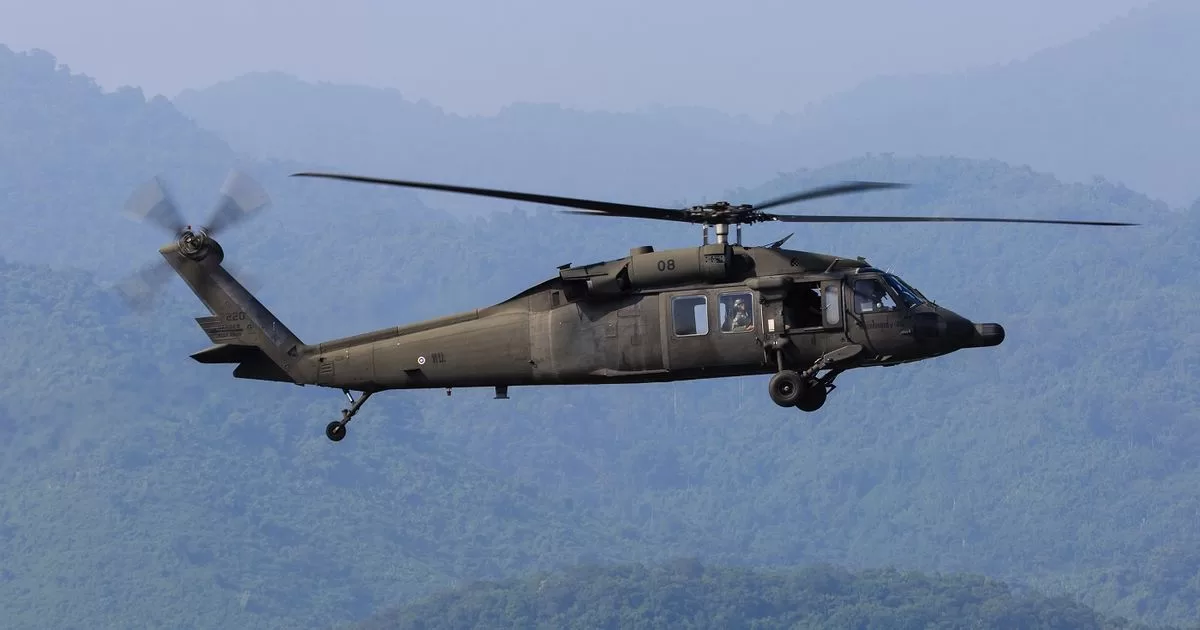GEORGETOWN.- And helicopter military in which seven people were traveling disappeared near the border of Guyana con Venezuela when flying over the territory of Essequiboover which both countries maintain a territorial dispute that dates back to the 19th century.
The authorities indicated that there was bad weather in the area and stressed that there were no indications that it could have been hit by hostile fire, at a time of tensions between both countries.
Two members of the helicopter crew were taking five high-ranking officers to an inspection of troops guarding a border area that Venezuela claims as its own, according to army chief Brigadier General Omar Khan.
In recent weeks, Venezuelan troops with heavy machinery and equipment have amassed at the border, leading to speculation about an imminent invasion. Guyana’s president, Irfaan Ali, declared on Wednesday that he was taking all necessary measures to defend the country from him.
Khan told reporters that the Guyana Defense Force lost contact with the Bell 412 EPI helicopter after it took off from the Olive Creek settlement in western Guyana following a refueling stop.
Asked if the aircraft was shot down while flying in a mountainous and heavily forested area, Khan said there was no indication that that had happened.
“We do not have any information that indicates that there was any flight of Venezuelan aircraft in that area,” he said. “I don’t want to enter into speculation. Our priority is to save the lives of our officers and troops,” he concluded.
He said the U.S. government will help in the search this Thursday.
The disappearance of the aircraft about 48 kilometers east of the border with Venezuela occurs at a time when tensions are increasing between Guyana and the South American country over the Essequibo region, which is rich in minerals and is located near enormous oil deposits. Venezuela claims the region as its own, insisting that it has been part of the country since the Spanish Colony.
The regime of Nicolas Maduro This past Tuesday, he presented before the National Assembly an Organic Law for the creation of the state of Guayana Esequiba after the results of the referendum on the annexation of the territory that took place on Sunday, December 3, which in the eyes of Caracas It went from being consultative to binding.
Likewise, he ordered the immediate exploration and exploitation of oil, gas and mines in the Essequibo territory. In a government act broadcast on radio and television, Maduro ordered that “immediately” proceed “to grant operating licenses for the exploration and exploitation of oil, gas and mines in the entire area of our Guayana Esequiba” – as Venezuela calls the strip in dispute – and for this, it ordered the creation of local subsidiaries of Corporación Estado Petróleos de Venezuela SA, (PDVSA) and Corporación Venezolana de Guayana (CVG) to the presidents of those public companies.
The territorial conflict dates back to the 19th century, when an 1899 ruling, defended from Georgetown, stipulated that Venezuela renounced Essequibo, although it later retracted this. For its part, Caracas relies on the 1966 Geneva Agreement signed between the United Kingdom (former colonial power of Guyana) and Venezuela, in which they recognized Essequibo as a disputed territory.
Source: With information from AP / Europa Press

